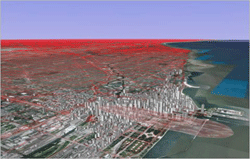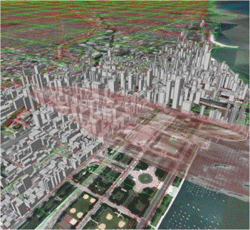Evacuation Planning (see also)
This email address is being protected from spambots. You need JavaScript enabled to view it. - TRACC Director
Background
Evacuation planning in large metropolitan areas requires an analysis of the complex interactions among the initiating event, the affected population, and the systems for transporting the population and emergency responders. Predicting the effects of events, such as the dispersion of a harmful agent in the urban area or waterways, or the development of natural hazards such as storms, may require the use of sophisticated engineering and scientific analysis methods for planning and/or real-time emergency response. Providing emergency response teams with optimal transportation pathways for rapid population evacuation may also require sophisticated modeling technology that can integrate the effects of pedestrian, vehicle, mass transit, and rail movements during the event.
Role of High-Performance Computing
Methods for modeling natural and man-made events that could require the emergency evacuation of a metropolitan area are being developed, such as computational fluid dynamics (CFD) methods for predicting the dispersion of harmful agents or the evolution of severe storms in urban environments. Population and transportation system response can also be modeled with state-of-the-art traffic simulation codes. Three-dimensional, time-dependent CFD methods that can model the complex flow in urban environments, or traffic microsimulation codes that can model the evolution and interaction of the population with the developing traffic and congestion patterns, are required. High-performance computing systems using state-of-the-art software are required to perform the predictive calculations and provide guidance to the emergency planning team in a timely fashion.


Integrated model of a metropolitan area transportation network and contaminant dispersion